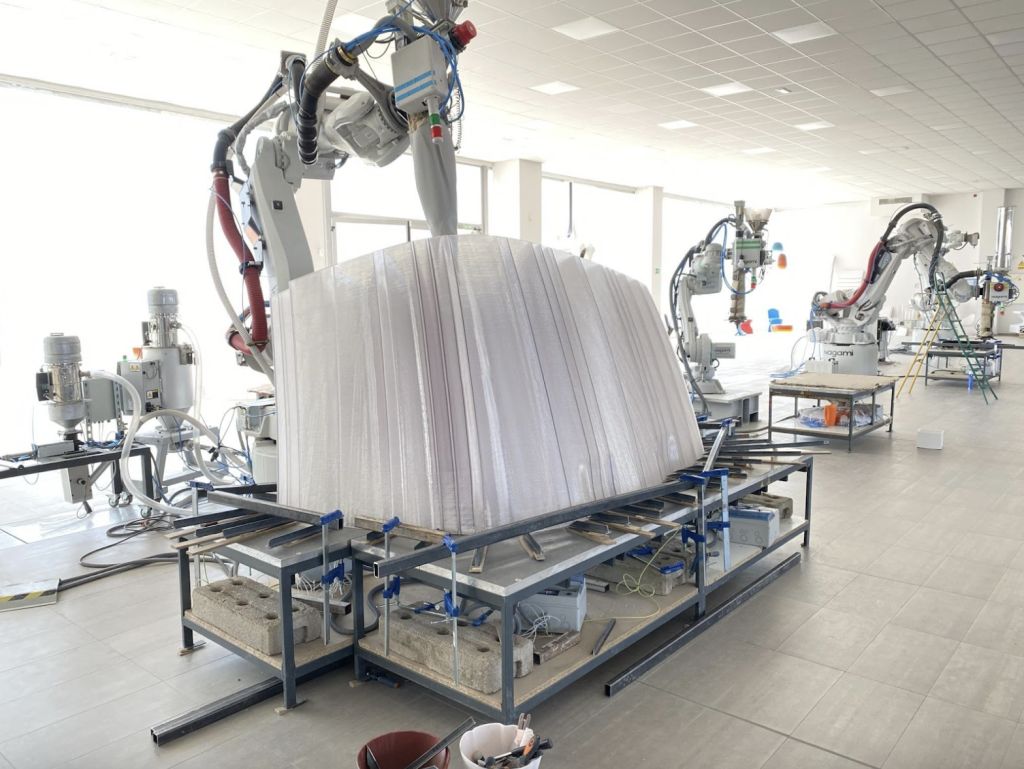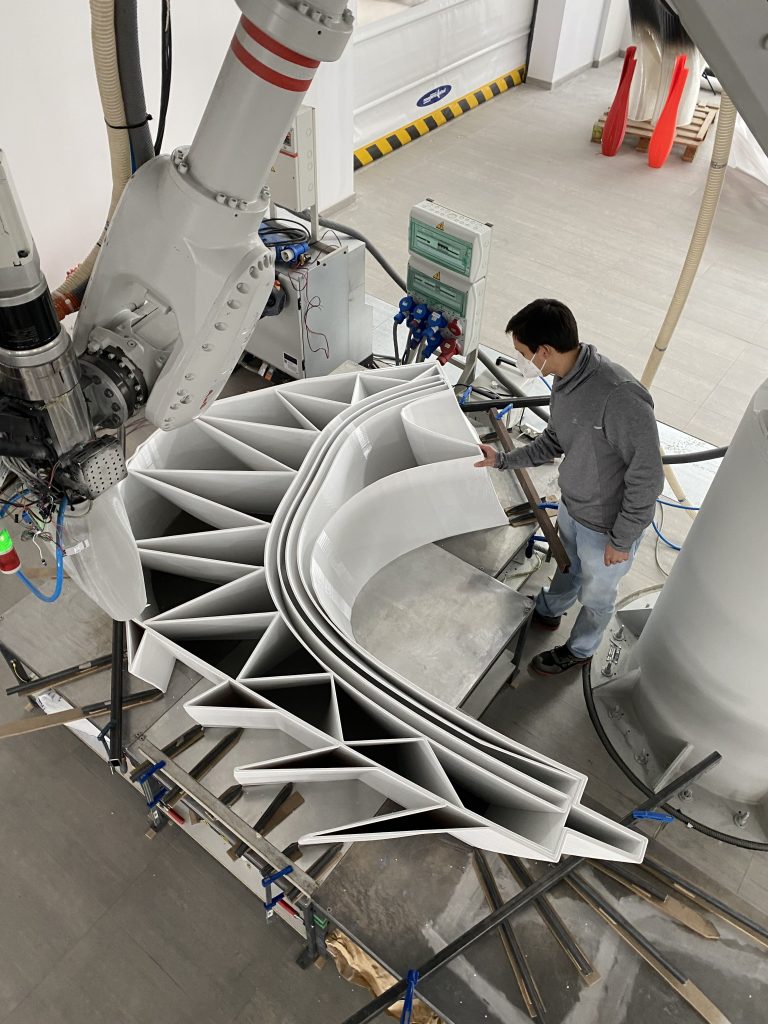Hassell, an international design studio, and to.org, a platform that operates in venture capital, philanthropy, and the creative space, have announced plans to create a 3D printed public pavilion made of recycled plastic.
“The implications of 3D printing at this scale are huge for architecture,” said Xavier De Kestelier, Hassell Head of Design, “we hope we can apply this aspect of adaptability across projects.” De Kestelier explains the goal was a pavilion that could operate fully off the grid and adapt to local climatic challenges and conditions, leaving as little “embodied and operational” carbon footprint as feasible.
Faced with the global challenge of plastic waste, this concept seeks to establish a precedent by utilizing plastic refuse as a resource for construction. The idea for the Pavilion arose from a meeting between Xavier De Kestelier, Hassell’s Head of Design, and Manuel Jimenez Garcia, the founder of Nagami, an additive manufacturing company.

Computational design and an adaptive structure
The prototype for the 3D printed Pavilion, inspired by indigenous shelters, can be easily modified to suit a variety of extreme climates and settings.
Hassell and Nagami designed the Pavilion using computational techniques and fabricated it entirely with 3D printing, allowing the structure to be customized to match local climatic conditions in various locations.
The Pavilion serves as a gathering space for meditation and education. It is the first phase in a broader plan to construct a series of pavilions that encourage material waste conversations.
Nachson Mimran, to.org Co-founder & Creative Executive Officer, explained that their experience with plastic upcycling began in 2018 with installing a bottle brick toilet in the Kyebando slum of Kampala, Uganda’s capital. “It was a natural next step” for to.org to begin using 3D printing, said Mimran. Working with Nagami, the enterprise previously created The Throne, a waste plastic 3D printed porta-potty.
The Pavilion’s main structure was 3D printed in 24 distinct components and designed to be readily transported and installed on-site. The concept, which features built-in seats, is currently under development at the Nagami factory in Spain and may provide a climate-sensitive reaction by instantly morphing and altering the structure.
The Pavilion pushes the limits of 3D printing to create full-scale functional architecture. Compared to most traditional manufacturing methods, 3D printing provides more geometrical freedom. Because of this architectural freedom, the pavilions were designed to function on minimal energy and are off the grid, establishing a precedent for the future of design.
“We have more than 5 billion metric tons of plastic waste on our planet. As 3D printing scales up into the domain of architecture and construction, we can massively increase the demand for recycled plastics, and therefore speed up the cleaning process of our oceans and landfills,” said Manuel Jimenez Garcia, Founder of Nagami. “We hope this project will contribute to inspiring a new generation of architects to truly believe that a radical change in construction, driven by eco-innovation, is truly possible.”
The idea is comparable to that of a Qarmaq, an Inuit inter-seasonal, single-room family residence. Hassell has leveraged lessons learned from indigenous shelters and structures to develop adaptable and sustainable techniques for dealing with difficult situations.
The Pavilion will be hermetically sealed for colder areas, with fins designed to capture snow and create natural insulation, similar to how snow insulates igloos. In hotter climates, overlapping fins provide natural shading, passive cooling, cross ventilation, and water harvesting.

What does the future of 3D printing for the next ten years hold?
What engineering challenges will need to be tackled in the additive manufacturing sector in the coming decade?
To stay up to date with the latest 3D printing news, don’t forget to subscribe to the 3D Printing Industry newsletter or follow us on Twitter, or like our page on Facebook.
While you’re here, why not subscribe to our Youtube channel? Featuring discussion, debriefs, video shorts, and webinar replays.
Are you looking for a job in the additive manufacturing industry? Visit 3D Printing Jobs for a selection of roles in the industry.
Featured image shows a render of the Pavilion. Image via Imigo.



